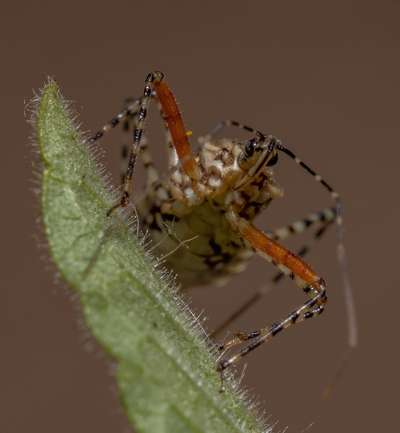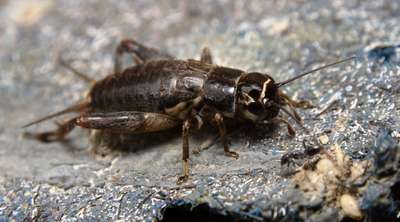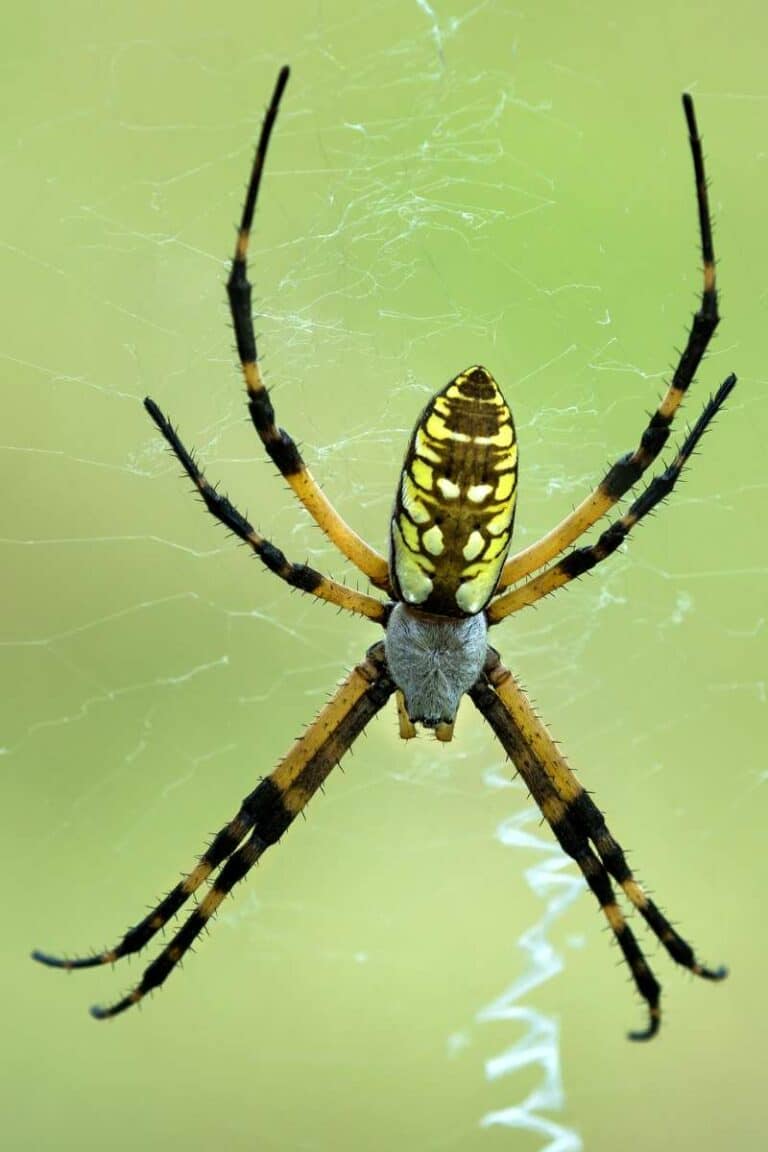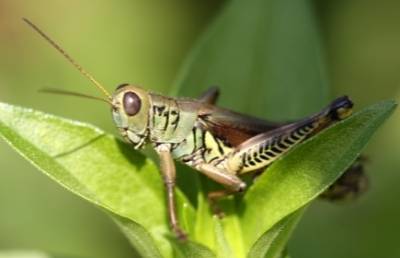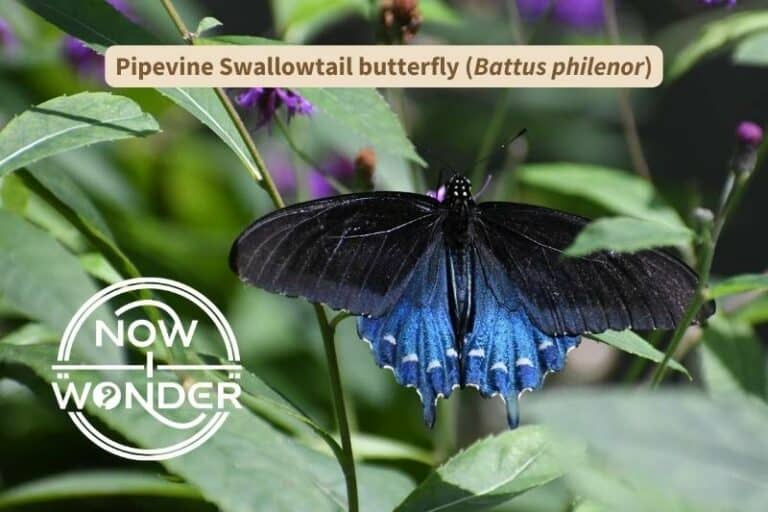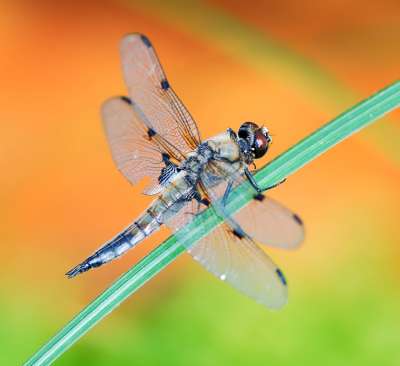Reptiles are often referred to as being “cold blooded”, as opposed to those animals considered “warm blooded” like mammals and birds.
Do reptiles really have “cold blood”?
Reptiles have “cold blood” in the sense that their body temperature varies with environmental conditions. Reptiles do not generate significant body heat through their metabolisms and rely on behaviors like basking in the sun to keep their body temperatures within their preferred range.
Under normal circumstances, most reptiles can keep their body temperatures within their preferred range for activity, which can be almost as high as warm blooded animals. The difference is that reptile body temperature is much more variable than those of birds or mammals.
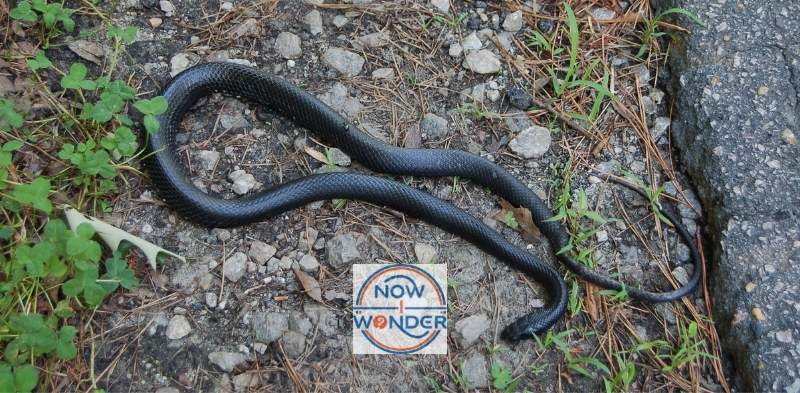
The following table compares the body temperatures for various reptiles, mammals, and birds.
| Scientific name | Common name (if known) | Approximate United States range | Type of animal | Body temperature in degrees Celsius (in degrees Farhenheit) | Citation (for body temperature in degrees Celsius) |
| Zootoca viviparous | Common viviparous lizard | Northern Europe and north of Arctic Circle | Lacertid lizard (reptile) | 26.7 plus/minus 0.5 to 34.8 plus/minus 0.4 (80.1 plus/minus 0.9 to 94.6 plus/minus 0.7) | Gvozdik 2022 |
| Lampropeltis triangulum | Milk snake | United States; southeastern Maine south through United States east of the Rocky Mountains | Colubrid snake (reptile) | 29.0 plus/minus 0.7 to 31.0 plus/minus 0.5 (84.2 plus/minus 1.3 to 87.8 plus/minus 0.9) | Row 2006 |
| Thamnophis sirtalis | Common garter snake | United States; Atlantic to Pacific coasts except desert regions of Southwest | Colubrid snake (reptile) | 20 to 30 (68 to 86) | Hughes 2019 |
| Agristrodon contortrix | Copperhead snake | United States; southwest Massachusetts south to Florida panhandle and west to Texas | Pit viper snake (reptile) | 23.1 (73.6) (mean) | Ernst 2014 |
| Coluber constrictor | Racer snake | United States; every state in continental U.S. except Alaska | Colubrid snake (reptile) | 28.1 (82.6) (mean) | Ernst 2014 |
| Terrapene carolina | Eastern box turtle | United States; southeast Maine south through Florida Keys, west to Michigan, south Illinois, Missouri, Oklahoma, and Texas. | Box turtle (reptile) | 11.0 to 36.0 (51.8 to 96.8) | Parlin 2018 |
| Alligator mississippiensis | American alligator | United States; coastal southeast North Carolina south to Florida Keys, west along coastal plain to south Texas, north to southeast Oklahoma | Crocodilian (reptile) | 20 to 29.3 (68 to 84.7) (weighted mean under laboratory conditions simulating winter and summer ambient temperatures) | Guderly and Seebacker 2011 |
| Sciurus carolinensis | Eastern gray squirrel | United States; eastern half | Rodent (mammal) | 37.94 to 39 (100 to 102.2) | Pereira 2002 |
| Odocoileus virginianus | White-tailed deer | United States; entire continental U.S. except for far Southwest | Cervid (mammal) | 38.5 (101.4) | Nunez 2020 |
| Anas platyrhynchos | Mallard duck | United States; entire continental U.S. | Duck (bird) | 38 to 43 (100.4 to 109.4) | Smith 1976 |
The common terms “cold blooded” and “warm blooded” are imprecise and confusing because they imply comparisons that aren’t defined in the terms. How cold is “cold blood”? How warm is “warm blood”? If a reptile’s body temperature is nearly 97 degrees Fahrenheit, can it really be considered cold blooded?
If cold blooded and warm blooded aren’t good terms to describe how reptiles and mammals manage their body temperatures, what terms should be used? Currently, the preferred terms are “ectotherm” for cold blooded reptiles and “endotherm” for warm blooded mammals and birds. These terms more accurately define how each animal group evolved to solve the problem of body temperature regulation.
Cold blooded reptiles and warm blooded mammals regulate their body temperatures very differently but both manage to keep their bodies within their optimal temperature ranges unless exposed to environmental extremes for which they can’t compensate.
This post discusses the fundamental differences between how cold blooded reptiles and warm blooded mammals and birds manage their body temperatures.
The ability to regulate body temperature, called “thermoregulation”, is absolutely vital to an organism’s survival because every animal has a temperature range in which it functions most effectively.
An animal’s body temperature depends on the cumulative effect of heat input and heat output. An animal cools by losing more heat than it gains and warms by gaining more heat than it loses. The actual formula for body temperature is:
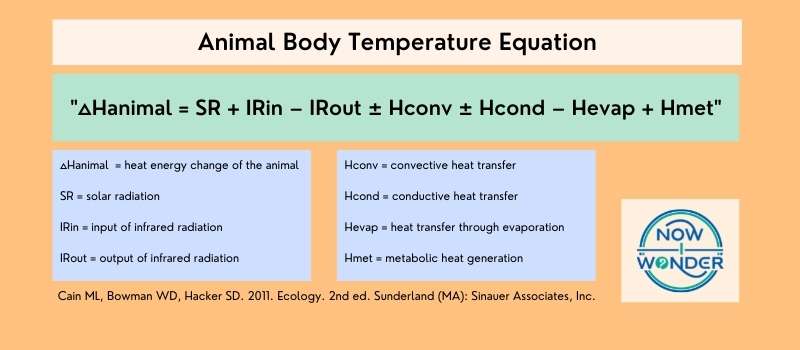
As seen in the above body temperature formula, body temperature is determined by how much each factor contributes to the animal at any given time. Whether an animal is considered an ectotherm or an endotherm depends on how much it relies on each possibility to maintain an functional body temperature.
Ectothermic animals, or “ectotherms”, are those traditionally referred to as cold blooded, like reptiles and invertebrates such as insects.
Ectotherms regulate their body temperatures primarily by exchanging energy (i.e. heat) with their surrounding, external environments and have variable metabolic rates. Their body temperature is determined almost entirely by the environment; the energy source that increases body temperature comes from the environment, not the reptile’s body.
Endothermic animals, or “endotherms”, are those traditionally referred to as warm blooded, like mammals and birds.
Endotherms generate a lot of body heat through high, stable metabolic rates and are less reactive to environmental conditions than ectotherms. The energy source that increases body temperature is internal and comes from the animals themselves.

Why can’t reptiles make heat or regulate their body temperatures?
It is a myth that reptiles do not manufacture body heat or regulate their body temperatures. All animals generate heat as a byproduct of cellular respiration. But in reptiles, the rate of heat generation is minimal, variable, and is closely tied to their environments’ ambient temperature.
Heat gain from internal metabolism
A major difference between reptiles and mammals is the ability to generate large amounts of heat internally through cellular metabolism.
Endotherms like mammals and birds have fast metabolisms that demand a lot of energy intake in the form of food but also generate a lot of heat.
If an endothermic mammal can consume enough food to sustain their metabolic rate, they manufacture a constant amount of heat, allowing their body temperature to remain stable even during huge swings in environmental temperatures. They rely much more on the heat generated by their own internal metabolisms than on the other heat inputs, like solar radiation.
Ectotherms like reptiles have variable metabolisms that are heavily influenced by the temperatures of their environments.
Their metabolisms slow in cooler habitats, resulting in less generation of internal body heat and lower activity levels. While ectotherms manufacture some body heat just by virtue of being alive, they manufacture much less than endotherms at any given time, especially when they are cooler than their bodies prefer.
Heat gain from radiation
Animals can gain external heat to raise their body temperatures in two ways: solar radiation and infrared radiation. Solar radiation is the sunlight that pours down on Earth and consists of shortwave light and ultraviolet energy, Infrared energy is the longer wavelengths of light that Earth emits after absorbing solar radiation (NOAA date unknown). Endotherms and ectotherms differ in their reliance on these energy sources for heat.
Both endotherms and ectotherms sense solar and infrared radiation but respond to it differently. Endotherms don’t depend on radiation to maintain their body heat because they are capable of manufacturing the majority of their needed body heat on their own.
In contrast, because they generate less body heat through their metabolisms, ectotherms rely on solar and infrared radiation for the heat they need to function optimally. Reptiles can control the amount of radiation they receive very effectively by:
- Basking in the sun
- Retreating under cover or into shade when temperatures rise too high
- Exposing only portions of their bodies to solar radiation at any given time
- Increasing the surface area exposed to sunlight by turning broadside and/or flattening themselves out.
- Decreasing the surface area exposed to sunlight by facing the sun and/or stretching themselves taller
- Raising or lowering their bodies to contact more or less of Earth’s surface
- Migrating seasonally
- Altering the time of day or night when they are most active as the seasons progress (i.e. shifting from diurnal to nocturnal activity patterns)
Different reptiles need to devote different amounts of time and effort to adjust their body temperatures through these various strategies. Species that live in tropical environments may not need to bask in the sun at all because the environmental temperatures are stable and warm. Many nocturnal snakes are adapted for the cooler, but more stable temperatures at night.
But since environmental temperatures effect cold blooded reptiles much more than warm blooded mammals and birds, these behaviors evolved to help ectotherms manage and stabilize their body temperatures and survive.
Heat gain or loss from other sources
The other components of the energy balance equations can either add or remove heat from an animal’s body temperature. These include:
- Infrared radiation: heat that radiates through space without requiring molecules or a medium to travel through
- Conduction: heat the flows from one place to another within a material without any of the material itself actually moving (i.e. an animal’s feet get colder when pressed against ice)
- Convection: heat the moves from one place to another because it is carried by material (i.e. animal loses body heat in windy conditions as the cooler air drags heat away from the body surface)
- Evaporation: heat transfer to occurs through the conversion of water from liquid to gas (i.e. panting and sweating)
Insulation
Endotherms and ectotherms also differ in the amount of heat energy they lose to their environment. Or to put it another way, cold blooded reptiles and warm blooded mammals and birds differ in how well they retain body heat in cool temperatures.
In general, mammals and birds retain much more of their body heat for much longer than reptiles under the same environmental conditions, mainly because they evolved insulation. Birds are covered in down and feathers and many mammals are covered in fur or hair, in addition to having higher levels of body fat than reptiles. All of these structures are good insulators, which help the animals retain the heat their bodies create.

Cold blooded reptiles are more susceptible to heat loss due to to conduction and convection because they aren’t as well insulated as endotherms. Reptiles are covered in thick skin and scales, but these are poor insulators. The combination of relatively higher heat loss due to poor insulation and lower metabolic rates means that ectotherms like reptiles both lose heat faster and replace heat slower than endotherms, making them more sensitive to cool environmental temperatures.
But while ectotherms like reptiles lose heat readily due to conduction and convection, they lose less heat through evaporation than do endothermic animals. Reptile skin is usually thick and made up of multiple layers of dead cells with a fatty coating overlain by plates or scales. These layers prevent reptiles from losing a lot of water in hot conditions, allowing them to inhabit dry, hot environments.
Tradeoffs of ectothermy and endothermy
Endotherms can maintain a stable activity level across a wide range of temperatures thanks to their ability to thermoregulate independently. This lets them inhabit a wide variety of habitats while preserving the metabolic processes that support quick reflexes for avoiding predation and finding food.
But they pay a high price for this independence in that they must consume a large and consistent amount of food to maintain their metabolisms. This can be a challenge in marginal habitats with extreme temperatures; endothermic animals can be forced to either change habitats or adopt other strategies like hibernation to survive the extremes.
Activity levels of ectotherms drop as temperatures cool, which makes them very efficient as far as the demands on their metabolisms. Reptiles do not need to eat as much as mammals because their metabolisms are so variable; they are better at conserving energy since they don’t burn through the calories is their food as quickly as endotherms. This conservation strategy allows ectotherms to tolerate a much wider range of temperatures than endotherms and thus inhabit a wider variety of habitats.
Unfortunately, their variable metabolic rates impact their activity levels in cooler temperatures. All animals have a temperature range in which their physiology functions best. When temperatures are higher or cooler than ideal, their reaction time and locomotion tends to suffer. Ectotherms like reptiles become sluggish when they are too cool because their metabolic rate slows and they can’t create as much energy as quickly as when they are warm, making it easier for predators to catch them.
Another drawback of ectothermy is the time and effort reptiles must devote to managing their body temperatures behaviorally. Time and energy spent on thermoregulation like basking to warm up or retreating to shade to cool down can’t be spent on important activities like foraging for food, growing new body tissue, and reproducing.
Cold blooded, ectothermic reptiles and warm blooded, endothermic mammals and birds evolved different strategies to manage their body temperatures effectively and survive in a wide variety of habitats. Each strategy involves trade-offs that impact the animals’ physiology, behavior, and distribution; both have unique benefits and drawbacks that allow these animals to co-exist as incredibly successful natural wonders.
Related Now I Wonder Posts
To learn more about reptiles in general, check out these other Now I Wonder posts:
- Do reptiles have hearts?
- Can reptiles get too hot?
- Can reptiles get too cold?
- Why can’t reptiles chew?
- Do reptiles lay eggs?
- Do reptiles give birth?
References
Cain ML, Bowman WD, Hacker SD. 2011. Ecology. 2nd ed. Sunderland (MA): Sinauer Associates, Inc.
Ernst CH, Creque TR, Orr JM, Hartsell TD, Laemmerzahl AF. 2014. Operating body temperatures in a snake community of northern virginia. Northeast Nat. 21(2):247-58. Available at: https://doi.org/10.1656/045.021.0205
Guderley H, Seebacher F. 2011. Thermal acclimation, mitochondrial capacities and organ metabolic profiles in a reptile (alligator mississippiensis). Journal of Comparative Physiology.B, Biochemical, Systemic, and Environmental Physiology. 181(1):53-64. Available at: https://doi.org/10.1007/s00360-010-0499-1
Gvozdik L. 2002. To heat or to save time? thermoregulation in the lizard zootoca vivipara (squamata: Lacertidae) in different thermal environments along an altitudinal gradient. Can J Zool. 80(3):479-92.
Hughes DF, Delis PR, Meshaka,Walter E.,,Jr. 2019. Comparison of body temperatures across physiological states in syntopic snake species (thamnophis sirtalis and nerodia sipedon) from pennsylvania. Northeast Nat. 26(4):749-60. Available at: https://doi.org/10.1139/z02-015
NOAA, National Weather Service, National Oceanic and Atmospheric Administration. The Earth-Atmosphere Energy Balance. Date unknown. Available at: https://www.weather.gov/jetstream/energy
Nunez CM, Vickers ML, Thomas LF, Trotter KE, Cook WE (2020) Successful Treatment of Severe Hyperthermia in Captive White-Tailed Deer (Odocoileus virginianus). Poult Fish Wildl Sci 8:210. doi: 10.35248/2375-446X.20.8.210.
Parlin AF, Nardone JA, John KD, Rebein M, Safi K, Schaeffer PJ. 2018. Activity and movement of free-living box turtles are largely independent of ambient and thermal conditions. Movement Ecology. 6.
Pereira ME, Aines J, Scheckter JL. 2002. Tactics of heterothermy in eastern gray squirrels (sciurus carolinensis). J Mammal. 83(2):467-77. Available at: https://doi.org/10.1007/s00442-005-0350-7
E. Norbert Smith, Connie Peterson, Kenneth Thigpen, Body temperature, heart rate and respiration rate of an unrestrained domestic mallard duck, anas platyrhynchos domesticus, Comparative Biochemistry and Physiology Part A: Physiology, Volume 54, Issue 1, 1976, Pages 19-20, ISSN 0300-9629. Available at: https://doi.org/10.1016/S0300-9629(76)80064-3

